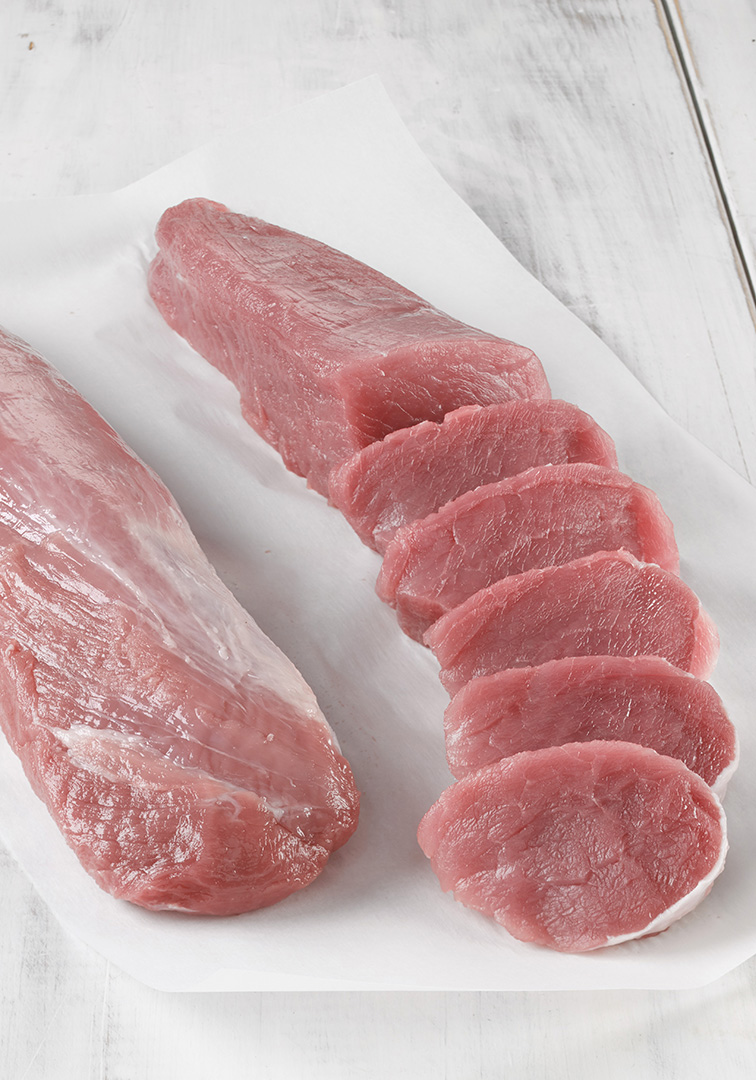Pork tenderloins

Pork tenderloin is a desired, delicate cut, often considered one of the best cuts of pork because of its tenderness and mild flavour. Here’s a guide to everything you need to know about this refined cut of meat and how best to prepare it.
Key Features
The pork tenderloin is found along the backbone, in the rear part of the hog. It’s a long, thin muscle with very little fat, making it a very tender cut.
- Its mild, subtle flavour makes it an excellent base for a variety of marinades and seasonings.
- Pork tenderloin is extremely tender due to its low connective tissue content. It’s perfect for quick cooking at high temperatures.
- This cut lends itself to numerous cooking methods, making it a flexible choice for cooking.
Cooking techniques
- Pork tenderloin lends itself perfectly to oven cooking. We recommend first searing it in a pan to create a golden crust, then finishing it in the oven for 12 to 15 minutes at a moderate temperature (400°F) to preserve its tenderness.
- Cut into medallions and pan-fry over high heat for beautifully caramelized meat with a juicy interior. Fry over high heat 3 minutes per side, then over low heat until internal temperature reaches 145°F.
- Ideal for barbecues, grilled pork tenderloin should be cooked quickly over medium-high heat to avoid drying out the meat. Grill over direct heat on each side to brown, then cook from 10 to 14 minutes over indirect heat with lid down.
- This method cooks the tenderloin at a low temperature, guaranteeing perfect tenderness and even cooking. It can then be briefly seared to add colour.
- Cut the tenderloin into thin slices and sauté with vegetables and a light sauce for a quick, tasty meal.
:quality(65))
:quality(65))
:quality(65))
:quality(65))
:quality(65))
:quality(65))
:quality(65))
:quality(65))
:quality(65))
:quality(65))
:quality(65))
:quality(65))
:quality(65))
:quality(65))
:quality(65))
:quality(65))